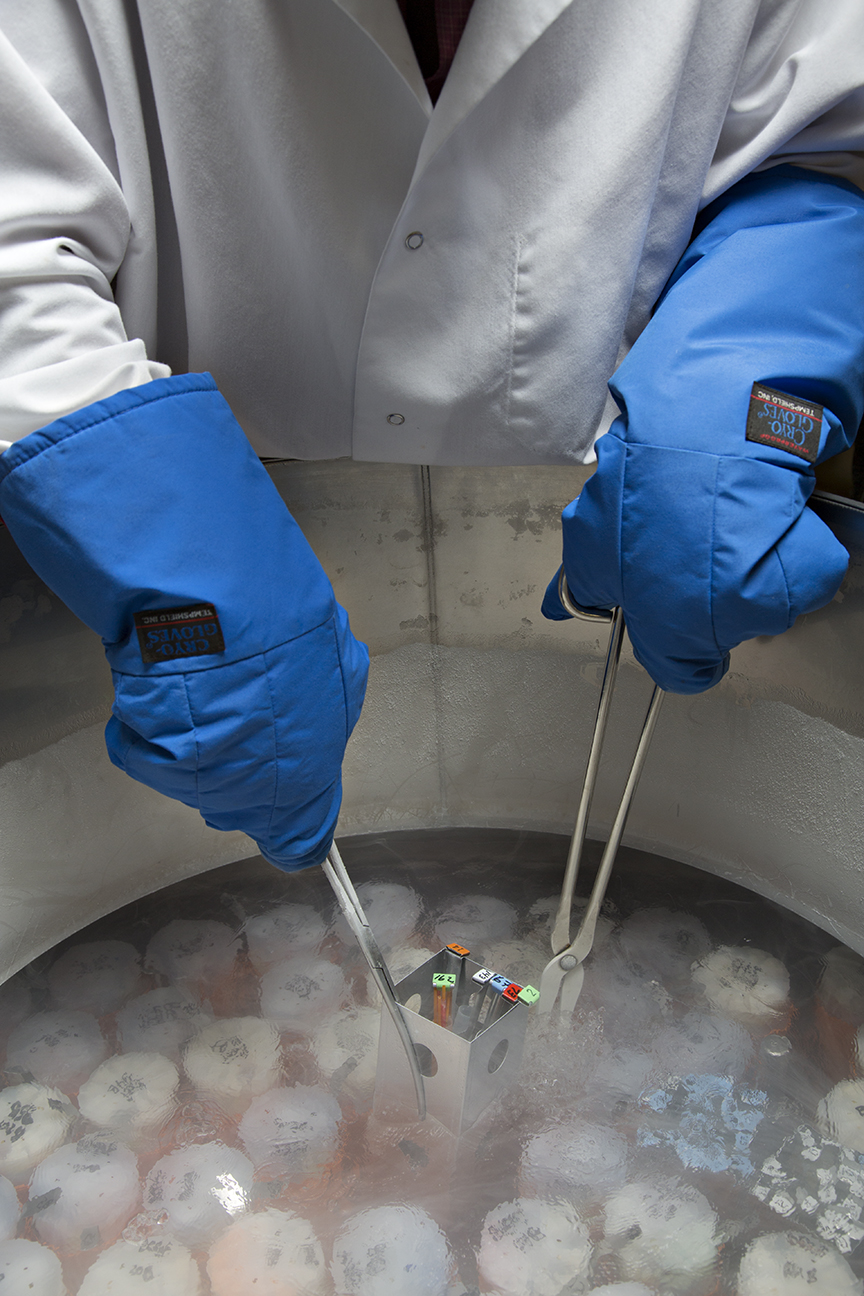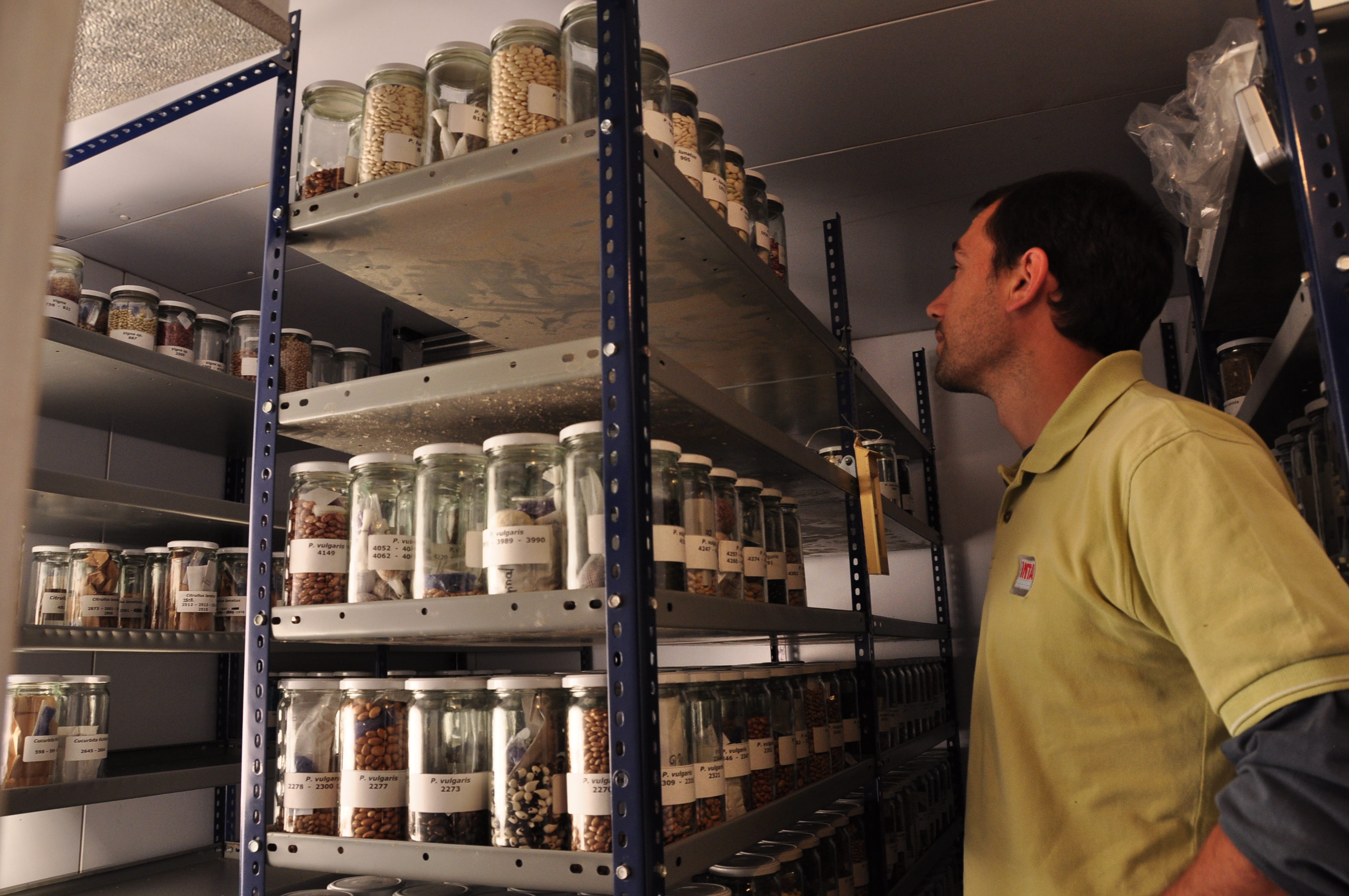|
National Clonal Germplasm Repository
The National Clonal Germplasm Repository is a branch of the Agricultural Research Service research agency of the United States Department of Agriculture (USDA). The Repository is a gene bank that preserves genetic resources by various means, including cryopreservation. There are nine clonal repositories located in appropriate locations throughout the United States. Germplasm of citrus plants and dates are preserved in Riverside, California, a distribution center for grapes, temperate fruit, walnut, almond and pistachio nuts is located in Davis, California, and the repository for temperate small fruit, berries, pears, hazelnut, butternut and specialty crops is located in Corvallis, Oregon. The base gene bank for the USDA National Germplasm System is the National Center for Germplasm Preservation at Ft. Collins, CO. This center holds seeds of agronomic crops, cryopreserved clonal plant materials, animal, and bacterial germplasm. See also * Germplasm Resources Information Network ... [...More Info...] [...Related Items...] OR: [Wikipedia] [Google] [Baidu] |
Agricultural Research Service
The Agricultural Research Service (ARS) is the principal in-house research agency of the United States Department of Agriculture (USDA). ARS is one of four agencies in USDA's Research, Education and Economics mission area. ARS is charged with extending the nation's scientific knowledge and solving agricultural problems through its four national program areas: nutrition, food safety and quality; animal production and protection; natural resources and sustainable agricultural systems; and crop production and protection. ARS research focuses on solving problems affecting Americans every day. The ARS Headquarters is located in the Jamie L. Whitten Building on Independence Avenue in Washington, D.C., and the headquarters staff is located at the George Washington Carver Center (GWCC) in Beltsville, Maryland. For 2018, its budget was $1.2 billion. For 2023, the budget grew to $1.9 billion. Mission ARS conducts scientific research for the American public. Their main focus is on research ... [...More Info...] [...Related Items...] OR: [Wikipedia] [Google] [Baidu] |
United States Department Of Agriculture
The United States Department of Agriculture (USDA) is an executive department of the United States federal government that aims to meet the needs of commercial farming and livestock food production, promotes agricultural trade and production, works to assure food safety, protects natural resources, fosters rural communities and works to end hunger in the United States and internationally. It is headed by the secretary of agriculture, who reports directly to the president of the United States and is a member of the president's Cabinet. The current secretary is Brooke Rollins, who has served since February 13, 2025. Approximately 71% of the USDA's $213 billion budget goes towards nutrition assistance programs administered by the Food and Nutrition Service (FNS). The largest component of the FNS budget is the Supplemental Nutrition Assistance Program (formerly known as the 'Food Stamp' program), which is the cornerstone of USDA's nutrition assistance. The United Stat ... [...More Info...] [...Related Items...] OR: [Wikipedia] [Google] [Baidu] |
Gene Bank
A gene bank is a type of biorepository that is used across the world to store the genetic material of animals, plants, and other organisms. It preserves their genetic information in the form of reproductive material like seeds, sperm, eggs, embryos, cells and other kinds of DNA. Often times, these banks house the genetic material of species that are endangered or close to extinction.They are also used for the preservation of major crop species and cultivars, in order to preserve crop diversity.This protects the organism from threats like extinction, diseases, and climate change. Preservation is done via the collection and storage of reproductive material from an organism. For example, seeds and cuttings may be collected from plants, spores may be collected from fungi, and sperm and egg cells may be collected from animals. Pollen is also an essential component for the reproduction of seed plants. It contains the male genetic material for fertilization of other plants and is ... [...More Info...] [...Related Items...] OR: [Wikipedia] [Google] [Baidu] |
Genetic Resources
Genetic resources are genetic material of actual or potential value, where genetic material means any material of plant, animal, microbial genetics, microbial or other origin containing functional units of heredity. Genetic resources is one of the three levels of biodiversity defined by the Convention on Biological Diversity in Rio, 1992. __NOTOC__ Examples *Animal genetic resources for food and agriculture *Forest genetic resources *Germplasm, genetic resources that are preserved for various purposes such as breeding, preservation, and research *Plant genetic resources *Genetic resources conservation and sustainable use See also *Cryoconservation of animal genetic resources, a strategy to preserve genetic resources cryogenically *Commission on Genetic Resources for Food and Agriculture, the only permanent intergovernmental body that addresses biological diversity for food and agriculture *International Treaty on Plant Genetic Resources for Food and Agriculture, an internationa ... [...More Info...] [...Related Items...] OR: [Wikipedia] [Google] [Baidu] |
Cryopreservation
Cryopreservation or cryoconservation is a process where biological material - cells, tissues, or organs - are frozen to preserve the material for an extended period of time. At low temperatures (typically or using liquid nitrogen) any cell metabolism which might cause damage to the biological material in question is effectively stopped. Cryopreservation is an effective way to transport biological samples over long distances, store samples for prolonged periods of time, and create a bank of samples for users. Molecules, referred to as cryoprotective agents (CPAs), are added to reduce the osmotic shock and physical stresses cells undergo in the freezing process. Some cryoprotective agents used in research are inspired by plants and animals in nature that have unique cold tolerance to survive harsh winters, including: trees, wood frogs, and tardigrades. The first human corpse to be frozen with the hope of future resurrection was James Bedford's, a few hours after his c ... [...More Info...] [...Related Items...] OR: [Wikipedia] [Google] [Baidu] |
Germplasm
Germplasm refers to genetic resources such as seeds, tissues, and DNA sequences that are maintained for the purpose of animal and plant breeding, conservation efforts, agriculture, and other research uses. These resources may take the form of seed collections stored in seed banks, trees growing in nurseries, animal breeding lines maintained in animal breeding programs or gene banks. Germplasm collections can range from collections of wild species to elite, domesticated breeding lines that have undergone extensive human selection. Germplasm collection is important for the maintenance of biological diversity, food security, and conservation efforts. In the United States, germplasm resources are regulated by the National Genetic Resources Program (NGRP), created by the U.S. congress in 1990. In addition the web server The Germplasm Resources Information Network (GRIN) provides information about germplasms as they pertain to agriculture production. Regulation In the United Stat ... [...More Info...] [...Related Items...] OR: [Wikipedia] [Google] [Baidu] |
Riverside, California
Riverside is a city in and the county seat of Riverside County, California, United States. It is named for its location beside the Santa Ana River. As of the 2020 census, the city has a population of 314,998. It is the most populous city in the Inland Empire and Riverside County, the List of largest California cities by population, 12th-most populous city in California, and the List of United States cities by population, 61st-most populous city in the United States. Alongside San Bernardino, Riverside is a principal city in the nation's 13th-largest metropolitan statistical area; the Riverside–San Bernardino–Ontario had 4.6 million residents in 2020. Riverside is about southeast of downtown Los Angeles and is also part of the Greater Los Angeles area. Riverside was founded in the early 1870s. It is the birthplace of the California citrus production, citrus industry and home of the The Mission Inn Hotel & Spa, Mission Inn, the nation's largest Mission Revival Style architec ... [...More Info...] [...Related Items...] OR: [Wikipedia] [Google] [Baidu] |
Davis, California
Davis is the most populous city in Yolo County, California, United States. Located in the Sacramento Valley region of Northern California, the city had a population of 66,850 in 2020, not including the on-campus population of the University of California, Davis, which was over 9,400 (not including students' families) in 2016. there were 40,850 students enrolled at the university, and is known as the biking capital of America. History Davis sits on land that was historically inhabited by Indigenous people associated with the Clovis culture, Clovis culture. The Patwin, a southern branch of Wintun people, eventually displaced existing Indigenous tribes. The Patwin were subsequently displaced by the American and Mexican government in the 1830s as part of the California genocide. Patwin burial grounds have been found across Davis, including on the site of the UC Davis Mondavi Center. Territory that eventually became Davis emerged from Ranchos of California, ranchos, Laguna de Sant ... [...More Info...] [...Related Items...] OR: [Wikipedia] [Google] [Baidu] |
Corvallis, Oregon
Corvallis ( ) is a city in and the county seat of Benton County, Oregon, Benton County in central western Oregon, United States. It is the principal city of the Corvallis, Oregon Metropolitan Statistical Area, which encompasses all of Benton County. As of the 2020 United States census, 2023 Census Population Estimates, the population was 61,087, making it the List of cities in Oregon, 9th most populous city in Oregon. This does include the 38,000 Oregon State University students attending classes in Corvallis, over 5,250 of whom live in one of 16 residence halls on the main campus. Corvallis is the location of Oregon State University 420-acre main campus, Samaritan Health Services, a top 10 largest non-profit employer in the state, a 84-acre Good Samaritan Regional Medical Center (Oregon), Good Samaritan Regional Medical Center campus, and a 2.2 million square foot, 197-acre Hewlett Packard research and development campus. Corvallis is a part of the Silicon Forest. Corvallis is ... [...More Info...] [...Related Items...] OR: [Wikipedia] [Google] [Baidu] |
Germplasm Resources Information Network
Germplasm Resources Information Network or GRIN is an online USDA National Genetic Resources Program software project to comprehensively manage the computer database for the holdings of all plant germplasm collected by the National Plant Germplasm System. GRIN has extended its role to manage information on the germplasm reposits of insect (invertebrate), microbial, and animal species (see sub-projects). Description The site is a resource for identifying taxonomic information (scientific names) as well as common names on more than 500,000 accessions (distinct varieties, cultivars etc.) of plants covering 10,000 species; It gives 450,000 accessions (outdated; GRIN gives 500,000 as of June 2012). both economically important ones and wild species. It profiles plants that are invasive or noxious weeds, threatened or endangered, giving out data on worldwide distribution of its habitat; as well as passport information. GRIN also incorporates an Economic Plants Database. The netwo ... [...More Info...] [...Related Items...] OR: [Wikipedia] [Google] [Baidu] |
Agricultural Organizations Based In The United States
Agriculture encompasses crop and livestock production, aquaculture, and forestry for food and non-food products. Agriculture was a key factor in the rise of sedentary human civilization, whereby farming of domesticated species created food surpluses that enabled people to live in the cities. While humans started gathering grains at least 105,000 years ago, nascent farmers only began planting them around 11,500 years ago. Sheep, goats, pigs, and cattle were domesticated around 10,000 years ago. Plants were independently cultivated in at least 11 regions of the world. In the 20th century, industrial agriculture based on large-scale monocultures came to dominate agricultural output. , small farms produce about one-third of the world's food, but large farms are prevalent. The largest 1% of farms in the world are greater than and operate more than 70% of the world's farmland. Nearly 40% of agricultural land is found on farms larger than . However, five of every six farms i ... [...More Info...] [...Related Items...] OR: [Wikipedia] [Google] [Baidu] |






